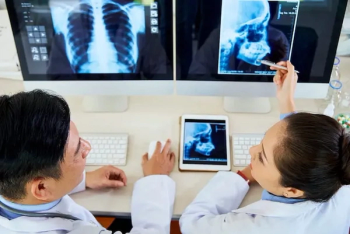
Study Says Machine Learning MRI Model May Help Predict Recurrence Risk of Hepatocellular Carcinoma
Noting that the machine learning model incorporating magnetic resonance imaging (MRI) had a higher mean area under the curve (AUC) than a model based solely on clinical features for predicting hepatocellular carcinoma recurrence, researchers said the study findings could have implications for refining liver transplant criteria.
An emerging machine learning model, which incorporates post-contrast magnetic resonance imaging (MRI), reportedly enhances the prediction of recurrence among patients treated for early-stage hepatocellular carcinoma (HCC).
In a recent retrospective study, published in the
Reviewing recurrence screening on a yearly basis for six years, the researchers found that the overall area under the curve (AUC) ranged between 71 to 85 percent for the MRI imaging model, between 62 and 86 percent for the combined model, and between 60 percent and 78 percent for the clinical model. However, for patients who had a liver transplant, the MRI imaging-specific machine learning model and the model that combined MRI scans and clinical features had an 87.5 success rate of predicting recurrence in comparison to a 25 percent success rate for the clinical model.
“The models’ ability to use MRI information to stratify patients as low or high risk for recurrence prior to therapy allocations may help satisfy an unmet need for biomarkers that reliably predict posttreatment outcome,” wrote study co-author Julius Chapiro, MD, PhD, an assistant professor affiliated with the Department of Radiology and Biomedical Imaging at the Yale University School of Medicine, and colleagues. “The in-depth imaging-related information analyzed by the models may have additional utility with respect to transplant criteria, allowing criteria refinement and guiding the selection of eligible patients with HCC for transplant.”
The overall mean time to recurrence was 26.6 months, according to the study. The researchers reported the highest AUCs at the four- and six-year assessments for recurrence. Chapiro and colleagues noted that the clinical model had AUCs of 78 percent and 69 percent for these time periods in comparison to AUCs of 81 and 85 percent for the MRI imaging model and an AUC of 86 percent for both time periods for the combined model.
In addition to the limitations of a retrospective single center study, the authors said the small sample size prohibited the use of independent test sets to gauge the general application of the machine learning model. Conceding the imaging features extracted for the machine learning model were solely focused on liver findings, the study authors noted that imaging findings outside of the liver could also have an impact on HCC recurrence.
In contrast to a 20 percent recurrence rates noted in other studies after liver transplant, Chapiro and colleagues attributed this study’s higher 36.7 percent recurrence rate to the inclusion of recurrence among patients treated with resection (18 out of 32 patients) and thermal ablation (18 out of 29 patients).
Newsletter
Stay at the forefront of radiology with the Diagnostic Imaging newsletter, delivering the latest news, clinical insights, and imaging advancements for today’s radiologists.




